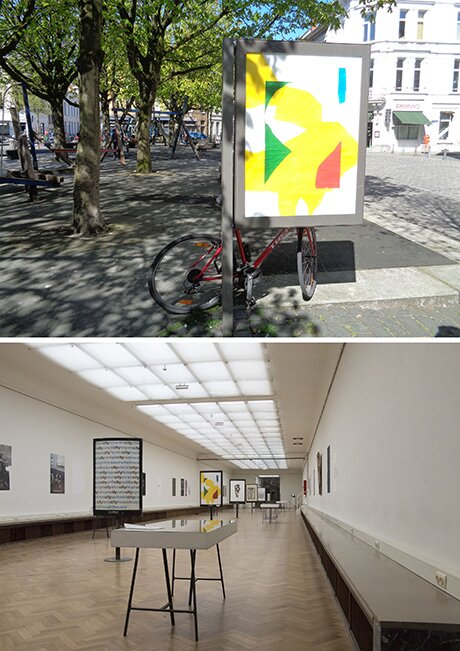INSIDE The Billboard Project

Within the context of the faculty's 'Research Course Unit', 7 master students conducted a location research in which they investigated the physical and social space of the sites in Antwerp where the selected billboards were located. They presented the results to the artists who provided art for the billboards
Research questions.
The students also investigated the influence of that artwork in the billboards on the particular sites during the week of 17/04 – 25/04/2016.
By means of a visual analysis, diverse mapping methods, a photographic report , video-montages and enquiries with passengers-by and key informants, they want to reveal how the specific public spaces change and if the number of (social) interactions increases at these spaces.
The final results of this research was presented in the exhibition Inside the Billboard Project (Lange Zaal Antwerp, 2017).
This exercise was part of an interdisciplinary project of the Royal Academy of Arts, (supervis.: Sanja Tomic & Natali Sarkisyan) & the Faculty of Design Sciences (supervis: Els De Vos & Tine Poot). There were 2 kinds of moments for the public: the street exhibition in 2016, and the closing exhibition in 2017. The project was sponsored in natura by the billboard company Agrafa, the District Antwerp, the Royal Academy of Arts and the Faculty of Design Sciences.
Impact.
There were 2 kinds of moments for the public: the street exhibition in the Antwerp public space (17/04 – 25/04/2016), and the closing exhibition in de Lange Zaal (Antwerp) from 16/03-31/03/2017.
(a) certain results inspired the PhD research of Tine Poot (such as the color scheme of public spaces). (b) the communication between students of visual arts and students of architecture was very fruitful.
c). The SMAK (in Ghent) contacted us to gain more information about the project as they were interested to set up a similar event in Ghent.
+ the project received a lot of interest on the Art research Days in the Singel (26, 27, 28 October 2016)
* Students have included the project in their studies as a reference to urban density and for the specificity of the use of materials and tectonics.